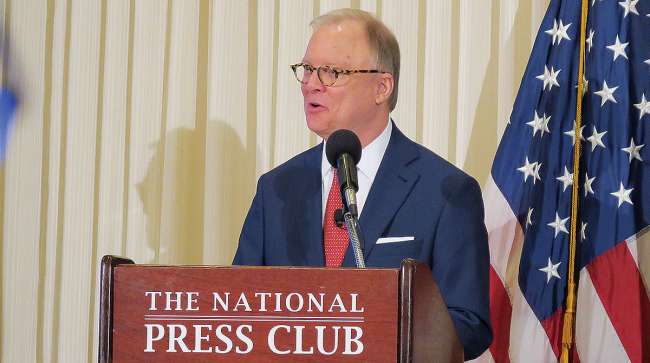Staff Reporter
NTSB Announces Leadership Changes

National Transportation Safety Board Chairman Robert Sumwalt recently announced three leadership changes.
Sharon Bryson is the agency’s new managing director after serving as deputy managing director for about a year. As managing director she assists Sumwalt with daily operations, such as directing staff activities and developing plans to accomplish program objectives. She replaced Dennis Jones, a 40-year NTSB employee who recently retired.

Paul Sledzik becomes deputy managing director, supporting Bryson with day-to-day operations. He also serves as the agency’s chief human capital officer.
Dolline Hatchett’s new role is director of the Office of Safety Recommendations and Communications after serving as the office’s deputy director.
“Sharon, Paul and Dolline bring a wealth of knowledge to this agency, its mission and the traveling public,” Sumwalt said Feb. 28. “I am extremely grateful to them for their willingness to serve in these leadership roles and I am excited for our path ahead.”
NTSB is an independent federal agency that determines the probable cause of transportation-related accidents and promotes transportation safety.
Bryson had been in charge of the Office of Safety Recommendations and Communications leading the team responsible for NTSB’s external communications, advocacy and safety recommendation management. The team also delivered family assistance services to people affected by transportation disasters.
Bryson started working at NTSB in 1997 as a victim assistance specialist.
Sledzik also led the Office of Safety Recommendations and Communications. From 2010 to 2016, he led NTSB’s Transportation Disaster Assistance Division, which facilitates family assistance with state and local government agencies and transportation operators.
Hatchett, prior to joining NTSB, was deputy chief of the Department of Homeland Security’s Office of Citizenship and Applicant Information Services as well as its Office of Communications.
NTSB spokesman Christopher O’Neil said that the new leaders represent broad perspective on the issues that the agency deals with.
“They have such a breadth of experience with the agency,” O’Neil said.
NTSB unveiled on Feb. 4 this year’s list of Most Wanted List of Transportation Safety Improvements identifying the biggest safety improvements for all modes of transportation, including highway, pipeline and hazardous materials, and rail. Standardized collision avoidance technology in cars and trucks and required screening for obstructive sleep apnea were two of the 10 issues on the list.




